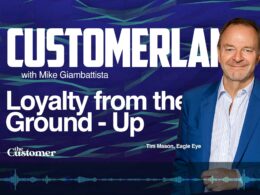When looking for ways to improve your marketing strategies, consumer psychology may not be your first stop. But there’s a surprising amount of relevancy to some foundational effects in the study of psychology. Here are four effects that are particularly pertinent:
Mere Exposure Effect
This effect is a straightforward one: the more you see something, the more you like it. This is also referred to as the familiarity principle.
By Olivia Lipkin
In terms of marketing, the more visible your brand is, the more people positively evaluate your business. Think about it: If you had the choice between an off-brand soda and Coca Cola, you’re probably more likely to choose Coca Cola since you’ve seen it around before. When you see something well-known (rather than brand new information) your brain doesn’t have to process the information as much, so it’s a quicker decision to go with what you know.
This is why intent data is so crucial – by placing ads at the right time in front of the right people, potential prospects can become familiar enough with your brand to prefer it over others.
Foot-in-the-Door Effect
Imagine someone knocked on your door and asked you to sign a petition in support of safe driving. You sign the petition and go on about your day. Later, the petitioners come back and ask to put up a large sign in your yard that reads “Drive Carefully”. Research has found that, since you already committed to the smaller request, you’re more likely to agree to the larger request. Your neighbors, however, were only asked to put the large sign up (no petition request first) – with no preceding request, your neighbors are significantly less likely to accept the larger ask.
So, ultimately, the foot-in-the-door effect is that a person is more likely to agree to a bigger request if they’ve already agreed to a smaller request first.
For marketing, this is good news. If a client has already engaged with your brand, they’re more likely to respond positively to larger requests, such as sales pitches.
Say you have a client who visited your website and was given the option to sign up for your email newsletter. They opted in to the mailing list – that’s the small request. Then, you send out a newsletter that asks the client to sign up for a product demo. Or, maybe the client is asked to download and read a research report. These larger requests may be more effective after the client has already completed the smaller ones. It’s one of the reasons why cold calling or emailing isn’t as effective (the other reason being, of course, the familiarity/mere exposure effect).
Framing Effect
The framing effect is one type of cognitive bias where the presentation of an option changes how that option is perceived.
For example, a grocery store could advertise their sale as “Buy One Get One” or as “50% off”. It’s the same deal, but how it’s framed has changed, and these small changes affect consumer behavior in big ways.
Ma’Ruf, Tabrani, & Madjid (2019) detailed how customers evaluate promotions, emphasizing how the customer rates the believability of the deal, their expectations from the sale, and their purchase intention. One interesting phenomenon is that promotions that feel “too good to be true” will often be ignored by prospects, as the believability is too low for the customer to engage with the promotion.
This is all to say that subtle cues have conspicuous effects. When dealing with promoting data, deals, or details of your product, pay attention to how everything is framed, because your customers definitely will.
Attention Vs. Intention
Some not so great news. That aforementioned mere exposure effect has a catch: It’s pretty reliant on attention.
More recent research has found that attention modulates exposure effects. In simpler terms, without explicit instructions from the advertisement to examine the advertised product, the mere exposure effect isn’t as, well, effective. It’s critical to direct the customer’s attention to the most pertinent part of the advertisement.
What this means for marketing is that advertisements may require some gaze cues to make sure customers are looking at the right part of the ad – not just the flashy images or influencers, but the product itself. Once you can guarantee a customer’s proper attention to your ad, you can expect their intention.
There are plenty of other psychological phenomena that apply to marketing, such as the door-in-the-face effect, affective priming, availability heuristics, and cognitive loads, to name a few. We’ve talked about the blending of neuroscience, psychology, and marketing before. The main takeaway from these effects are generally simple: Do your research and advertise well. Remember that your customers who view your advertisements or pitches are real people. By understanding broader patterns of consumer behavior, your company can ensure more customer intention and, accordingly, more customers.
Do you know which specific companies are currently in-market to buy your product? Wouldn’t it be easier to sell to them if you already knew who they were, what they thought of you, and what they thought of your competitors? Good news – It is now possible to know this, with up to 91% accuracy. Check out Aberdeen’s comprehensive report Demystifying B2B Purchase Intent Data to learn more.
This article originally appeared in Business2Community. Photo by howling red on Unsplash.











1 comment